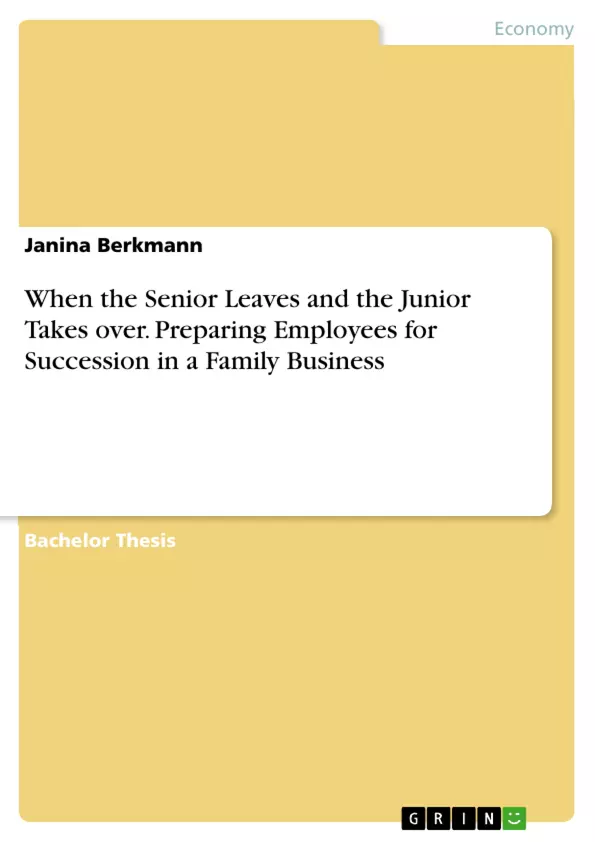Succession to the next generation is a widely discussed topic connected to family businesses. Thus, planning for this event, while also considering the employees of the business can be considered to be very important. This bachelor thesis, therefore, aims at giving a guideline on what actions incumbents and successor of a family business should take in order to prepare their employees for succession.
Firstly, a comprehensive literature review highlights several important topics connected to the succession within a family business. The significance of the incumbent and successor, as well as of the employees of a family business are also elaborated in order to highlight the relevance of these topics. Furthermore, succession within the family business is then connected to various steps and theoretical models. Moreover, a qualitative research approach in the form of expert interviews, combined with a case example of a family business are used in order to identify relevant information connected to the topic.
Inhaltsverzeichnis (Table of Contents)
- Introduction
- Problem Definition
- Aim and Research Question
- Methodology
- Definitions
- Family Business
- Succession
- Literature Review
- Succession in Family Businesses
- The Succession Process
- Succession Planning
- Success Factors for Succession
- Employees' Perspective
- Incumbent and Successor
- Succession in Family Businesses
- Empirical Approach
- Description of Analysis Method
- Sampling
- Setting of the Interview
- Results
- Responsibility and Role Assignment to Successors
- Incumbent Moving to the Background
- Investing into the Next Generation
- Early Integration of the Next Generation
- Working Atmosphere
- Open and Trustworthy Relationship with Employees
- Open and Transparent Communication
- Discussion
- Give Signals to Employees
- Build Trust and Foster Communication
Zielsetzung und Themenschwerpunkte (Objectives and Key Themes)
This bachelor thesis aims to provide a guideline for incumbents and successors of a family business on how to prepare their employees for succession. The research explores the significance of the incumbent, successor, and employees in the context of family business succession. It examines various theoretical models and steps involved in the succession process and draws upon qualitative research in the form of expert interviews to identify key information relevant to the topic.
- Succession Planning in Family Businesses
- The Role of Incumbents and Successors
- Employee Perspectives on Succession
- Key Factors for Successful Succession
- Building Trust and Open Communication
Zusammenfassung der Kapitel (Chapter Summaries)
The introduction outlines the problem definition, research question, and methodology of the thesis. It defines key terms such as "family business" and "succession," setting the stage for the subsequent literature review. The literature review delves into succession in family businesses, examining the succession process, planning, and success factors. It further explores the employee perspective and the roles of the incumbent and successor. The empirical approach section describes the qualitative analysis method employed in the research, outlining the sampling strategy and interview setting. The results chapter presents findings from the expert interviews, focusing on specific actions taken by incumbents and successors to prepare employees for succession. This includes assigning responsibilities to successors, the incumbent moving to the background, investing in the next generation, and fostering a positive working atmosphere.
Schlüsselwörter (Keywords)
The main keywords and focus topics of this thesis include family business succession, incumbent and successor roles, employee preparation, trust building, open communication, qualitative research, and expert interviews. The research focuses on understanding how to effectively manage the transition of leadership within a family business, considering the impact on employees.
- Quote paper
- Janina Berkmann (Author), 2016, When the Senior Leaves and the Junior Takes over. Preparing Employees for Succession in a Family Business, Munich, GRIN Verlag, https://www.grin.com/document/432728



